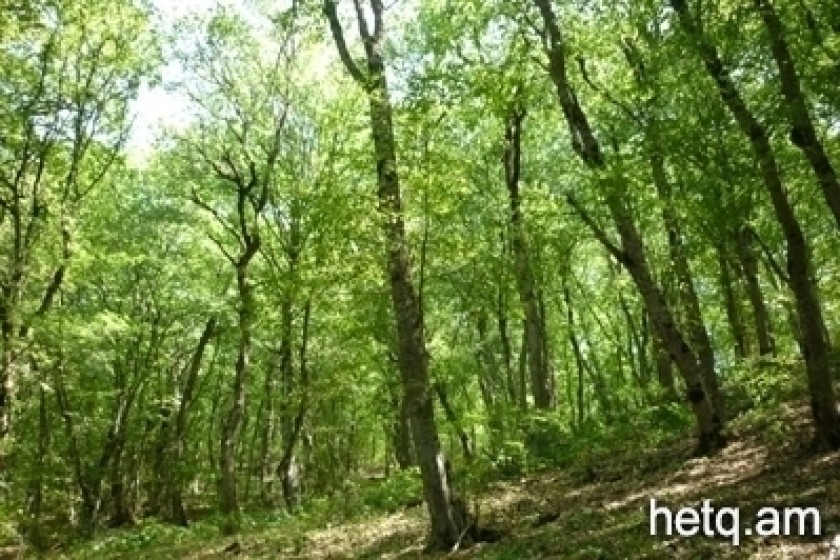
Requiem for Armenia's forests - 2
What makes Hovik Bekchyan, who works for the ecology and agriculture department of the Lori Marzpet’s (governor’s) office, most angry is that wood is being exported fromArmenia. In our forests, it’s mainly the most valuable trees, like beeches, that are being cut down. Beech trees regenerate only through seeds-they don’t sprout from stumps. As a result of mass deforestation, the natural dissemination of oak seeds is not taking place, either, and the species as such will be on the verge of extinction within a few years. Lindens, oaks, pine trees, and breadfruit trees all face the same fate; all are in danger of being wiped out in the forests of Lori.
The annual deforestation throughout the region is estimated at 25,000 square meters of wood, 5,000 of which is used in construction. But Bekchyan calculates the overall volume as more like 500,000 square meters a year. He says that every day about 1,000-1,500 square meters of wood is transported to various parts ofArmeniafrom the Lori forests. Although the forestry services fulfill state orders, they face financial difficulties, and cannot pay salaries. “It is unbelievable that a forestry where thousands square meters of woods are cut down can be in financial trouble,” Bekchyan says. But it all takes place outside the official budget-billions of drams have been in circulation here over the years, but in the shadow economy. This is made possible through protection by senior officials in the military and law enforcement agencies. Anyone in doubt can go to the Vanadzor-Yerevan highway in the early morning hours and count how many trucks loaded with wood are driving towardYerevan. The drivers like to travel at night and in the early morning, to keep out of sight.
“I will tell you something else-this year a state order for 3,000 square meters of wood was placed with the Gugark forestry service, where there are almost no trees left because of the mass deforestation. And I think that all this is taking place on purpose-all this illegal cutting is carried out under the cover of state orders. It’s a coded message for the illegal woodcutters to tell everybody that they are fulfilling state orders,” Bekchyan explains.
The average density of the Lori forests during the 1980s was 0.6-0.7 square meters. No studies have been conducted sinceArmenia’s independence, but Bekchyan estimates that the current density here is 0.3-0.4 square meters, which can’t be considered forest, since it has lost the ability to regenerate on its own.
“For decades, our grandparents used the forest, and I am convinced even now that cutting down trees for everyday use will not harm the forest. That alone would not put the forest into this condition, if it weren’t for exporting wood abroad, and for large and small wood-working enterprises operating in the shadows,” Bekchyan says. Since the “wood business” got underway, people in the villages near the forests of Lori have stopped working the land. In these hard times, villagers have become forest pirates, and clans and gangs of wood thieves have sprung up.
 Videos
Videos Photos
Photos
Write a comment